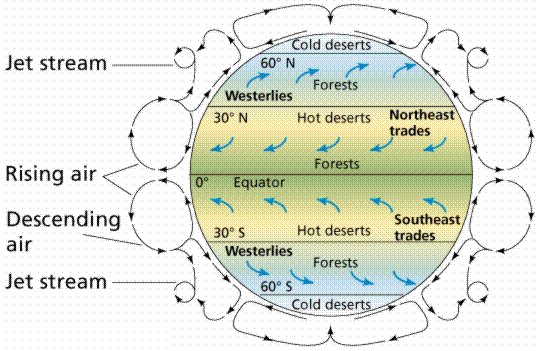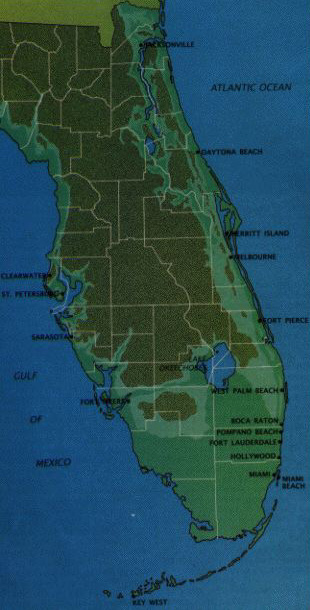
Amidst the arid regions of the world, Florida appears as a peninsula in the dominant desert belt of the northern hemisphere.
The state lies between 28 and 31 degrees North latitude |
Florida is in that portion of the hemisphere dominated by hot deserts. |
 |
Deserts
Deserts may be defined as those arid regions where evaporation exceeds precipitation on an annual basis. But some places on earth experience this deficit seasonally, such as Mediterranean climates in the summer and Florida or Thailand in the winter months.
Deserts cover about one fifth of the Earth's surface and occur where rainfall is less than 50 cm/year. Although most deserts, such as the Sahara of North Africa and the deserts of the southwestern U.S., Mexico, and Australia, occur at low latitudes, another kind of desert, cold deserts, occur in the basin and range area of Utah and Nevada and in parts of western Asia. Most deserts have a considerable amount of specialized vegetation, as well as specialized vertebrate and invertebrate animals. Soils often have abundant nutrients because they need only water to become very productive and have little or no organic matter. Disturbances are common in the form of occasional fires or cold weather, and sudden, infrequent, but intense rains that cause flooding.
There are relatively few large mammals in deserts because most are not capable of storing sufficient water and withstanding the heat. Deserts often provide little shelter from the sun for large animals. The dominant animals of warm deserts are nonmammalian vertebrates, such as reptiles. Mammals are usually small, like the kangaroo mice of North American deserts.
Desert biomes can be classified according to several characteristics. Four major types of deserts exist:

Much of the state is mostly below 100 meters in elevation.